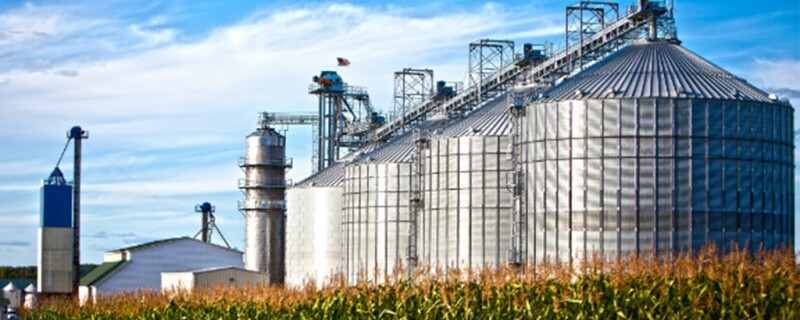The tragedy repeatedly makes news headlines: People entrapped in grain storage bins with only seconds to react before they are engulfed and suffocated.
What is a grain bin?
Grain bins typically store dry harvested farm crops, such as corn or soybeans, until they are transported for various needs such as feed, fuel, or food production. They are not to be confused with silos, which are used to store what’s known as silage (grass or other field greens harvested while still green and wet). Silage is typically used for cattle feed.
Why can grain bins be dangerous?
There are multiple hazards related to the operation of grain bins, including grain dust explosions and fires from accumulation inside the bin and grain bin entrapment and suffocation from engulfment by the harvested crop. Add in falls and injuries from improper handling of grain equipment, working in and around a farm’s grain bin can be a dangerous place if proper safety precautions are not followed.
How do people die in grain bins?
While there are several hazards related to grain bins, suffocation is by far the leading cause of death. Whether it’s due to trapped gasses overwhelming an individual, or from being engulfed by the harvested crop, the sheer weight and pressure of the material is more than the strongest of individuals can overcome. A person does not have to be fully entrapped either, if they are only entrapped up to their torso/chest, the pressure constricts their ability to breath, causing them to pass out, suffocate, and die.
Understanding how people get trapped in grain bins
Scenario 1: A worker enters the top of a grain bin, and the auger begins running to unload the grain. Within five seconds, the worker becomes trapped. The flowing grain behaves like quick sand, pulling the worker down. After 22 seconds, he is completely covered.
Scenario 2: Unbeknownst to him, a worker stands on a “bridge” formed by clumped grain due to moisture or mold. Beneath the firm layer, there is a pocket of space and, when it collapses, the worker becomes buried. When unloading begins, the worker is instantly trapped.
Scenario 3: A worker is standing on the floor attempting to dislodge grain that’s accumulated on the side of the bin. The pile collapses onto the worker.
Scenario 4: Without warning, a bin can develop hazardous atmosphere or a lack of oxygen.
How many people die in grain bins?
Purdue University’s Agricultural Safety and Health Program reported 35 grain bin entrapment cases occurred in 2020, as part of its 2020 Summary of U.S. Agricultural and Confined Space Related Injuries and Fatalities report.
How to prevent grain bin suffocation
Considering it is one of the top causes of farm deaths, it’s hard to believe grain storage bin suffocation is easily preventable. But it is, as long as employers:
- Turn off and disconnect, lockout and tag, or block off all mechanical, electrical, hydraulic, and pneumatic equipment that presents a danger. Grain must not be emptied or moved into or out of the bin while workers are inside.
- Do not allow walking down grain to make it flow.
- Prohibit entry onto or below a bridging condition, or where grain is built up on the side of the bin.
- Provide workers entering a bin from a level at or above stored grain, or walking or standing on stored grain with a body harness connected to a lifeline or boatswain’s chair. The lifeline should be long enough to prevent a worker from sinking more than waist-deep in grain.
- Give workers rescue equipment specifically for rescue from the bin.
- Station an observer who is equipped to provide assistance and perform a rescue outside the bin. Make sure the observer and workers who enter the bin maintain communications.
- Test the air within a bin for oxygen content and the presence of hazardous gases before entering.
- Obtain a permit each time a worker enters a bin. The exception is if the employer will be present during the entire operation. The permit must certify that before workers enter the bin, they met the precautions above.
In the news
A Kentucky farmer talks about his rescue from a grain bin. His story underscores the importance of having and following proper safety protocols. Read his tale of survival.
Information from the U.S. Department of Labor Occupation Safety and Health Administration.






